Hãy nhập câu hỏi của bạn vào đây, nếu là tài khoản VIP, bạn sẽ được ưu tiên trả lời.

Đáp án B
Do cần lượng HNO3 ít nhất nên :
Fe − 2e → Fe2+
Cu − 2e → Cu2+
![]()
![]()
→ ![]()

Đáp án C
nFe = nCu = 0,15 mol
- Do thể tích dung dịch HNO3 cần dùng ít nhất → muối Fe2+
→ ∑ ne cho = 2.(0,15 + 0,15) = 0,6 mol
- Theo ĐLBT mol electron: nH+ = nHNO3 = (0,6.4) : 3 = 0,8 mol
→ VHNO3 = 0,8 lít

G/s: nFe = nCu = x mol
56x + 64x = 36 => x = 0,3 mol
Để thể tích HNO3 là ít nhất thì tạo sản phẩm là Fe2+
Bte => 2nFe + 2nCu = 3nNO => nNO = 0,4 mol
nHNO3 = 4nNO = 1,6 mol
=> V dung dịch = 1,6 lít
G/s: nFe = nCu = x mol
56x + 64x = 36 => x = 0,3 mol
Để thể tích HNO3 là ít nhất thì tạo sản phẩm là Fe2+
Bte => 2nFe + 2nCu = 3nNO => nNO = 0,4 mol
nHNO3 = 4nNO = 1,6 mol
=> V dung dịch = 1,6 lít
Đáp án C
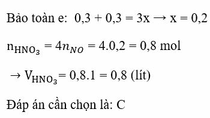
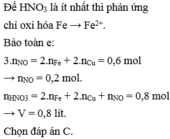
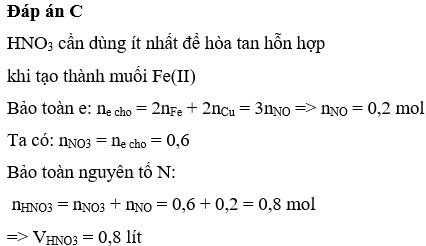
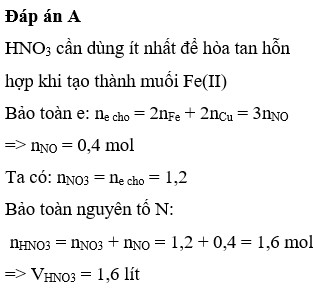
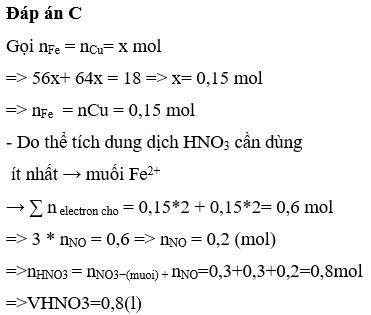
Đáp án C
Lượng HNO3 tối thiểu cần dùng khi: Fe → Fe2+ , Cu → Cu2+
Sơ đồ cho nhận e :
Fe – 2e → Fe2+
0,15 0,3
Cu – 2e → Cu2+
0,15 0,3
N+5 + 3e → N+2
3x x
→ Theo định luật bảo toàn mol e : 0,3 + 0,3 = 3x → x = 0,2 mol
→ Bảo toàn nguyên tố N : Số mol HNO3 = 0,3 + 0,3 + 0,2 = 0,8 mol
VHNO3 = 0,8 /1 =0,8 lit